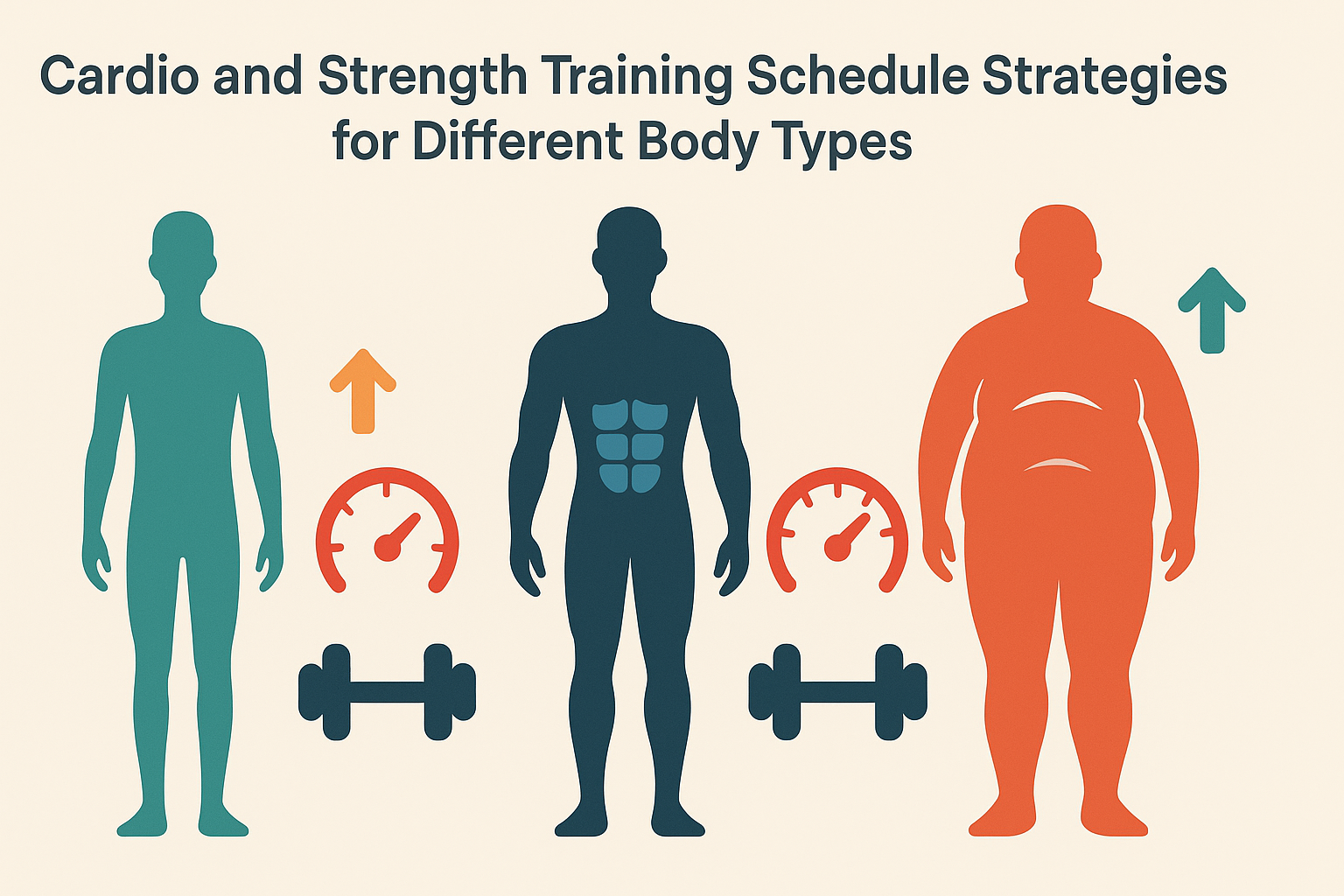Nutrient Timing to Support Your Cardio and Strength Gains
Fueling your body appropriately around workouts is paramount when integrating a cardio and strength training schedule. Nutrient timing refers to the strategic consumption of macronutrients—carbohydrates, proteins, and fats—before, during, and after exercise to enhance performance and accelerate recovery. While overall daily nutrition matters most for muscle growth and endurance, the timing of nutrient intake plays a pivotal role in how the body responds to training.
Before training, consuming a balanced meal rich in complex carbohydrates and moderate protein can ensure glycogen stores are topped off, providing the necessary fuel for high-intensity resistance or cardio work. Ideally, this meal should be consumed about 90 to 120 minutes prior to exercise. For early morning workouts or when time is limited, a smaller snack such as a banana with whey protein can offer a convenient solution without digestive discomfort.

Post-workout nutrition is particularly important in the context of muscle repair and glycogen replenishment. Consuming a blend of fast-digesting carbohydrates and high-quality protein within 30 to 60 minutes after training can enhance muscle protein synthesis and reduce muscle breakdown. The classic ratio often cited is 3:1 or 4:1 carbohydrates to protein, though needs may vary depending on training duration and intensity.
Hydration is another often-overlooked aspect of nutrient timing. Proper fluid balance supports blood volume, nutrient transport, and temperature regulation—factors critical for performance. Electrolytes lost through sweat should also be replenished, particularly after intense cardio sessions or prolonged training. Overall, a well-structured cardio and workout plan is supported by strategic eating, ensuring that every session contributes meaningfully to progress.
You may also like: The Ultimate Hypertrophy Workout Program for Building Strength and Size

Choosing the Right Types of Cardio for Muscle-Focused Athletes
Not all cardio is created equal, especially when the goal is to build muscle without compromising strength or size. Selecting the most compatible forms of cardio involves evaluating impact level, intensity, and energy system demands. Low-impact modalities such as cycling, rowing, incline walking, and swimming are particularly well-suited for athletes seeking to preserve muscle mass while enhancing cardiovascular capacity.
High-intensity interval training (HIIT) has gained significant traction among strength athletes due to its time efficiency and metabolic benefits. HIIT involves alternating between short bursts of maximum effort and periods of rest or active recovery. This method not only improves VO₂ max and anaerobic capacity but also promotes fat oxidation and insulin sensitivity. However, due to its demanding nature, HIIT should be limited to two or three sessions per week to prevent overtraining and central nervous system fatigue.
On the other hand, low-intensity steady-state (LISS) cardio offers a gentler approach. Walking on an incline treadmill, cycling at a conversational pace, or using an elliptical machine can stimulate recovery, burn fat, and improve circulation without tapping deeply into the body’s recovery reserves. LISS is particularly effective when used after strength training or on rest days, helping maintain energy expenditure without creating excessive fatigue.
For athletes with specific performance goals, incorporating sport-specific cardio—such as agility drills, sled pushes, or tempo runs—can provide both skill transfer and conditioning benefits. Ultimately, the most effective cardio and strength training schedule adapts the cardio component to the athlete’s body type, goals, and recovery capacity.

Cardio and Strength Training Schedule Strategies for Different Body Types
Understanding your body type, or somatotype, can greatly influence how you approach a cardio and workout plan. While body types are not rigid categories, they offer useful generalizations that can help tailor your training strategy. The three primary somatotypes are ectomorph, mesomorph, and endomorph—each with different propensities for fat storage, muscle gain, and metabolic rate.
Ectomorphs are typically lean, with fast metabolisms and a hard time gaining weight or muscle. For these individuals, cardio should be minimal and carefully programmed. One or two low-intensity sessions per week can suffice, with the bulk of effort placed on heavy resistance training and high caloric intake. Overdoing cardio can accelerate caloric expenditure and hinder mass gain.
Mesomorphs often have naturally athletic builds and respond well to both resistance and cardiovascular training. They can afford a more balanced approach, incorporating three to four days of weight training and two to three moderate cardio sessions weekly. This population thrives on variability and benefits from both hypertrophy-focused training and metabolic conditioning.

Endomorphs generally store fat more easily and may struggle with insulin sensitivity. For these individuals, a cardio and strength training schedule that includes more frequent cardio—three to five sessions weekly—alongside resistance training can enhance fat loss while preserving lean mass. Combining HIIT and LISS provides a metabolic edge, while dietary discipline becomes equally crucial.
Regardless of body type, customization and self-awareness are key. Monitoring energy levels, recovery, and body composition trends can guide necessary adjustments and ensure that the cardio and workout plan remains effective and aligned with evolving goals.

Avoiding Overtraining in a Dual-Modality Fitness Routine
Integrating both strength and cardiovascular modalities increases training volume, which can be a double-edged sword. While variety enhances adaptability and overall fitness, it also increases the risk of overtraining if not carefully managed. Overtraining syndrome manifests in physical, emotional, and psychological symptoms that degrade performance and quality of life.
Symptoms include persistent fatigue, insomnia, irritability, decreased immunity, loss of motivation, and stagnation in strength or endurance progress. When these signs arise, it’s a clear signal that recovery has been neglected or training intensity is too high. Preventing overtraining begins with smart programming, including built-in rest days, deload weeks, and variable intensity throughout the training cycle.
Listening to biofeedback is critical. Waking up with elevated resting heart rate, feeling constantly sore, or noticing a drop in enthusiasm for training are red flags. Strategic rest days should be treated as part of the plan, not a deviation from it. Mental recovery is just as important—chronic stress, work demands, or poor sleep can compound physiological stressors from exercise.
One effective approach is the 80/20 rule: training at lower intensity 80% of the time while reserving high-intensity efforts for the remaining 20%. This reduces systemic fatigue while still fostering progression. By maintaining a realistic and well-balanced cardio and strength training schedule, athletes can progress consistently while preserving mental and physical health.

Hormonal Optimization Through Balanced Training
The human endocrine system is deeply affected by exercise, and the way you train can either support or disrupt hormonal balance. Resistance training is well-documented to increase anabolic hormones such as testosterone, growth hormone, and IGF-1. These hormones are essential for muscle growth, recovery, and fat metabolism. However, when excessive cardiovascular training or chronic stress is introduced without adequate recovery, catabolic hormones such as cortisol can rise and impede progress.
Chronically elevated cortisol can lead to muscle breakdown, fat retention, and sleep disturbances. A thoughtful cardio and workout plan can mitigate this by emphasizing recovery, periodization, and lifestyle interventions. Practices such as mindfulness meditation, deep breathing, and strategic deloads help to buffer the effects of cumulative stress.
Timing also plays a role. Performing cardio and strength in the same session is best done by lifting first and finishing with low to moderate-intensity cardio. This sequence capitalizes on the anabolic state induced by resistance training and avoids interfering with muscular adaptations. Also, training during the circadian window when testosterone levels are highest—typically late morning to early afternoon—can provide a natural performance boost.
Nutrition once again plays a hormonal role. Sufficient fat intake is crucial for steroid hormone production, while carbohydrates help blunt excessive cortisol post-exercise. Protein ensures muscle repair and immune resilience. A holistic view of hormonal health, including training, nutrition, and stress management, is essential for extracting the maximum benefit from a cardio and strength training schedule.

Sample Weekly Schedule for Balanced Muscle and Endurance Gains
Crafting a weekly schedule that respects recovery, stimulates hypertrophy, and enhances endurance is the cornerstone of an effective fitness strategy. Below is a sample structure for intermediate-level trainees seeking to maximize results with a balanced approach:
- Monday: Upper Body Strength + LISS Cardio (20–30 minutes post-workout)
- Tuesday: Lower Body Strength
- Wednesday: HIIT Cardio (20 minutes) + Core/Mobility Work
- Thursday: Upper Body Hypertrophy + Optional Light Cardio
- Friday: Lower Body Hypertrophy
- Saturday: LISS or Outdoor Recreational Activity (e.g., hike, bike ride)
- Sunday: Rest or Active Recovery (stretching, foam rolling)
This structure honors the principle of muscle group recovery while ensuring cardiovascular stimulus is frequent enough to promote endurance adaptations. Flexibility remains essential—life happens, and being adaptable while remaining consistent is a hallmark of long-term success. Logging sessions and tracking performance metrics can offer invaluable insight into the effectiveness of your chosen cardio and strength training schedule.
Frequently Asked Questions (FAQ) on Building Muscle with a Cardio and Strength Training Schedule
How can I personalize a cardio and strength training schedule based on my weekly lifestyle demands?
Tailoring a cardio and strength training schedule to your lifestyle starts by evaluating time availability, stress levels, and occupational demands. For individuals with high-stress jobs or long work hours, reducing total training volume while maintaining consistency may yield better long-term results than cramming in intense workouts. A three-day split combining compound lifts with short, efficient cardio sessions such as rowing or air bike sprints can deliver meaningful results. Moreover, tracking energy levels and sleep quality can inform when to schedule more intense workouts versus lighter recovery-focused days. Integrating flexibility and mindfulness techniques on off-days can also aid in mental recovery, supporting overall adherence to your cardio and workout plan.
Is there an optimal sequence for cardio and lifting within the same workout?
Yes, the order of exercise modalities within a single session influences performance and adaptation. For individuals prioritizing muscle growth, it’s generally advisable to begin with resistance training while energy stores are fresh and neuromuscular recruitment is at its peak. Performing cardio first may deplete glycogen and reduce lifting performance, particularly for compound movements like squats or deadlifts. However, in endurance-specific cycles or during active recovery days, low-intensity cardio can precede light resistance training without significant drawbacks. Experimenting with sequencing and monitoring performance can help refine the ideal flow of a combined cardio and strength training schedule.
What role does mental fatigue play in hybrid training, and how can it be managed?
Mental fatigue can significantly impact both performance and motivation within a hybrid cardio and workout plan. Prolonged cognitive stress diminishes focus, decision-making, and exercise intensity, especially in complex lifts or HIIT intervals. To counter this, programming shorter, mentally undemanding sessions during high-stress periods can help maintain momentum without adding psychological strain. Practicing mindfulness techniques such as breathing drills or brief meditations before training can enhance mental clarity. Rotating workouts to include enjoyable, less structured forms of movement—like recreational sports or nature hikes—can also mitigate burnout and sustain long-term engagement.
How can I ensure long-term progression without hitting plateaus in a cardio and workout plan?
Progressive overload and variability are key to avoiding stagnation in any cardio and strength training schedule. Incorporating phases of different emphases—such as hypertrophy, strength, or metabolic conditioning—stimulates new neuromuscular and metabolic adaptations. Tracking personal records, rest intervals, and perceived exertion over time provides data to inform necessary adjustments. Deload weeks, where volume or intensity is reduced, allow for nervous system recalibration and muscular recovery. Supplementing with novel training techniques such as blood flow restriction, eccentric overload, or tempo variations can also reignite progress while minimizing risk of overuse injuries.
What adjustments should be made to a cardio and strength training schedule during periods of poor sleep or illness?
Training under sleep deprivation or during illness can do more harm than good if not managed wisely. When sleep quality is compromised, it’s best to reduce session intensity or focus on mobility, stretching, and light cardio to encourage recovery without taxing the system. During illness, especially those involving systemic symptoms like fever or fatigue, training should be paused entirely until recovery begins. Upon returning, easing back into a cardio and workout plan with reduced volume and frequency helps avoid regression or reinjury. Maintaining hydration, nutrient-dense meals, and avoiding stimulants during this period also supports immune function and full recovery.
How can women benefit from a cardio and strength training schedule without triggering hormonal imbalances?
Women can experience profound physical and metabolic benefits from a well-balanced cardio and strength training schedule without fear of unwanted bulk or hormonal disruption. In fact, resistance training helps stabilize blood sugar, enhance bone density, and improve menstrual cycle regularity. Cardio should be programmed with the same principles of progression and recovery, with attention to the menstrual cycle’s impact on strength, endurance, and recovery. For example, women may experience better strength performance during the follicular phase, making it an ideal time for heavier lifts. Nutritional strategies that include adequate iron, calcium, and essential fats are especially important in supporting hormonal balance across all phases of training.
How can technology enhance the execution of a cardio and workout plan?
Wearable fitness trackers and training apps can be instrumental in optimizing a cardio and strength training schedule. These tools allow real-time monitoring of metrics like heart rate zones, recovery readiness, sleep stages, and training volume. Apps that track progressive overload help ensure incremental improvements, while others can guide interval timing for cardio sessions with precision. Recovery-focused tools like HRV monitoring and sleep analysis can alert users to early signs of overtraining. Integrating these data points into training decisions promotes a more individualized and responsive fitness journey, enhancing both performance and longevity in the program.
What are the best strategies for integrating a cardio and strength training schedule during travel or holidays?
Maintaining a cardio and workout plan while traveling requires flexibility and creativity. Resistance bands, suspension trainers, or bodyweight movements can replicate many gym-based exercises with minimal equipment. Hotel gyms or outdoor parks often suffice for basic routines that include push-ups, squats, lunges, and planks. Cardio can be as simple as brisk walking, hiking, or stair climbing—activities that also allow for cultural immersion and stress reduction. Planning shorter, high-impact sessions—such as 20-minute bodyweight circuits or interval sprints—can preserve fitness while maximizing time with family or work commitments. The key is consistency, not perfection; maintaining rhythm helps ease the transition back into full training post-travel.
Can a cardio and strength training schedule support cognitive health and productivity?
Absolutely. A well-structured cardio and strength training schedule contributes to enhanced cognitive function, including improved memory, attention, and stress regulation. Resistance training elevates brain-derived neurotrophic factor (BDNF), a protein that supports neuroplasticity and brain health. Cardio, particularly at moderate intensity, increases cerebral blood flow and supports executive function. Together, these effects translate into improved mental performance in academic, creative, and workplace settings. For individuals with sedentary desk jobs, splitting workouts into shorter morning and evening sessions can help boost energy levels throughout the day, improving focus and mood.
How is the future of cardio and strength training evolving with current fitness trends?
The future of hybrid training lies in greater personalization, recovery science, and integration with artificial intelligence. Smart gyms and digital platforms now offer adaptive programming based on user feedback, biofeedback, and wearable data, creating highly customized cardio and workout plans. Recovery tools like infrared therapy, wearable neuromuscular stimulators, and personalized nutrition algorithms are entering mainstream fitness. There is also a growing emphasis on functional movement, longevity, and sustainable fitness practices over purely aesthetic goals. As our understanding of physiology deepens, the cardio and strength training schedule of tomorrow will likely be more precise, data-driven, and health-centered, providing benefits well beyond physique development.
Conclusion: Mastering Muscle Growth with a Cardio and Strength Training Schedule
In the pursuit of physical excellence, the integration of cardiovascular and resistance training stands as one of the most powerful strategies for enhancing both form and function. A well-executed cardio and strength training schedule unlocks the potential for sustainable muscle gain, improved endurance, and enhanced metabolic health—all while reducing the risk of disease and supporting overall vitality. The days of treating cardio and lifting as adversaries are long gone; modern science supports their symbiotic relationship.
Success in this endeavor demands more than sweat—it requires knowledge, planning, and discipline. Understanding your individual needs, body type, goals, and lifestyle is essential for customizing a plan that works for you. Through strategic scheduling, nutrient timing, appropriate recovery, and a firm grasp of training principles, you can harness the full potential of a cardio and workout plan tailored for your unique journey.
Above all, patience and consistency are the twin engines of progress. Building muscle and cardiovascular resilience is not a sprint but a marathon—one that unfolds week after week, rep after rep, stride after stride. With a commitment to balance, precision, and self-awareness, you can forge a body that’s as capable as it is impressive. Embrace the journey, honor your recovery, and let your cardio and strength training schedule be the blueprint for your greatest transformation yet.
Further Reading:
Simple 8-week exercise plan for a healthy heart





